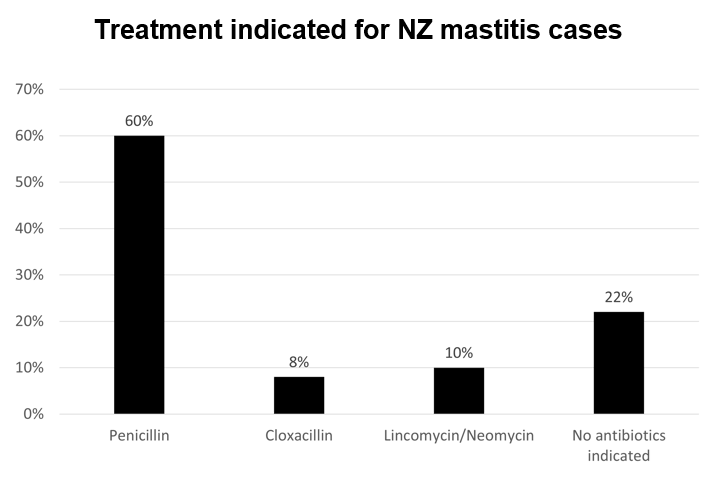13 March 2025

A new approach to managing cows with clinical mastitis
13 July 2023
Treating every case of clinical mastitis with 3 days of pain relief, taking a milk sample to identify the bacteria, waiting 24 hours for the result and then treating based on the result is the way of the future. This combined approach is better for cow welfare, and for mastitis management.

Why should you routinely test every case of clinical mastitis?
Mastatest has transformed mastitis treatment for farmers and vets. It identifies the bacteria causing mastitis and determines antibiotic sensitivity, enabling farmers to use the right drug, first time. This eliminates guesswork, fewer re-treatments, and saves time and money.
Over 100,000 mastitis milk samples were evaluated through Mastatest during the four years ending December 2022. The key trends are:
- Gram-negative bacteria and coliforms account for approximately 12% and antibiotics rarely work on these cases, so save money on antibiotics by identifying the bacteria and reducing the need for treatment
- Penicillin is recommended most commonly as the antibiotic treatment for cases of clinical mastitis. However, 40% of the time penicillin is not the first indication, highlighting the value of testing every clinical case of mastitis to identify the most appropriate treatment and improve cure rates

Why should you use pain relief for mastitis?
Mastitis is by definition inflammation of the udder and is often associated with pain, swelling and heat in the infected quarter. Treating with 3 days of KetoMax reduces pain and inflammation so cows recover normal behaviours quicker. The sooner they are back with their herd-mates, eating properly, milking to their potential, and cycling well they will have a long, healthy lactation.
